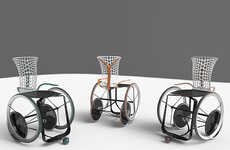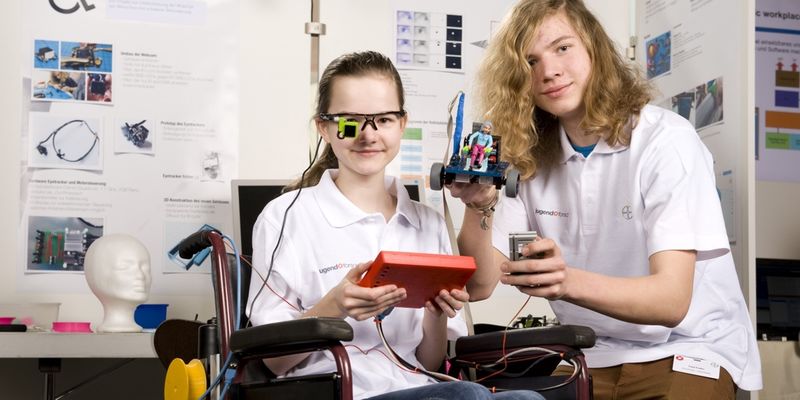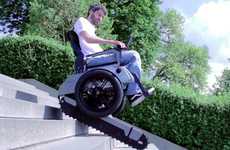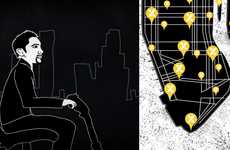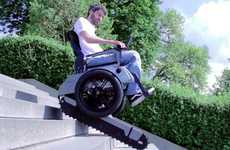
This Wheelchair Gives Disabled People a Greater Degree of Independence
Katherine Pendrill — September 11, 2015 — Tech
References: zerozeroonezeroonezeroonezero.wordpress & dailydot
Two German teens recently designed a wheelchair that gives disabled people a greater degree of independence. While new technology has dramatically improved conventional wheelchair designs, disabled people continue to face barriers in terms of accessibility and independence. This new system provides a revolutionary way for users to control their wheelchairs.
The open-source wheelchair is specifically designed for users who suffer from paralysis or other conditions that impact their motor control. The chair is controlled though the use of eye movements, which are tracked by a pair of safety glasses. The glasses are equipped with a webcam and a set of LEDs that illuminate the user's eye. The whole system relies on 'Raspberry Pi 2B' to process the user's eye movements. In order to prevent accidental movements, the chair is equipped with a series of safeguards that the user can engage at any time.
The eye-controlled system not only gives wheelchair users a greater degree of independence but also provides a cheaper solution to custom-built chairs.
The open-source wheelchair is specifically designed for users who suffer from paralysis or other conditions that impact their motor control. The chair is controlled though the use of eye movements, which are tracked by a pair of safety glasses. The glasses are equipped with a webcam and a set of LEDs that illuminate the user's eye. The whole system relies on 'Raspberry Pi 2B' to process the user's eye movements. In order to prevent accidental movements, the chair is equipped with a series of safeguards that the user can engage at any time.
The eye-controlled system not only gives wheelchair users a greater degree of independence but also provides a cheaper solution to custom-built chairs.
Trend Themes
1. Eye-controlled Assistive Technology - Disruptive innovation opportunity: Develop innovative eye-tracking technologies to improve accessibility and independence for disabled individuals.
2. Open-source Wheelchair Designs - Disruptive innovation opportunity: Create a platform for collaborative development of affordable and customizable wheelchair designs.
3. Integration of Raspberry Pi Technology - Disruptive innovation opportunity: Explore the integration of Raspberry Pi technology in various assistive devices to enhance control and functionality.
Industry Implications
1. Assistive Technology - Disruptive innovation opportunity: Develop advanced assistive technologies that empower disabled individuals and enhance their independence.
2. Healthcare and Rehabilitation - Disruptive innovation opportunity: Improve accessibility and rehabilitation services by incorporating innovative technologies in the healthcare industry.
3. Electronics and Hardware - Disruptive innovation opportunity: Drive innovation in electronics and hardware industries by designing more affordable and user-friendly assistive devices.
1.8
Score
Popularity
Activity
Freshness





